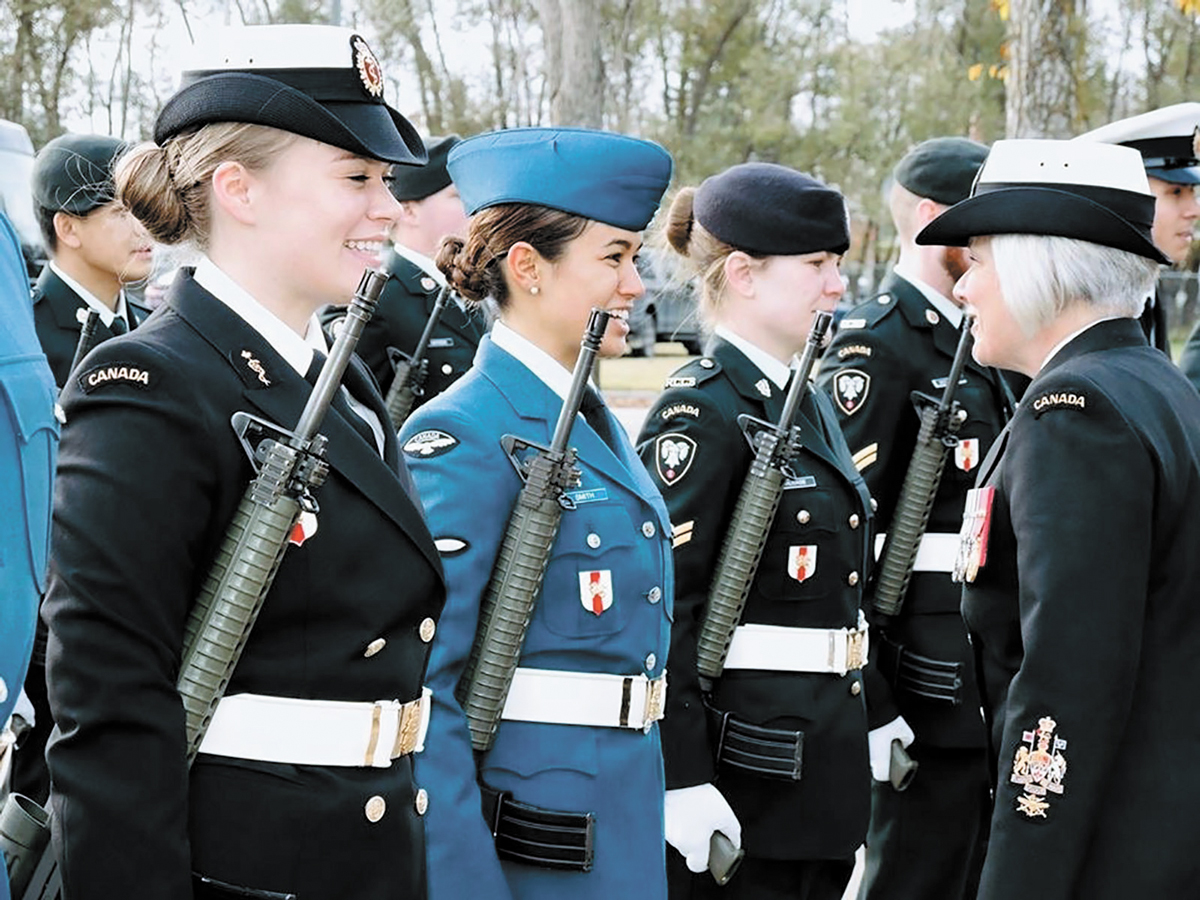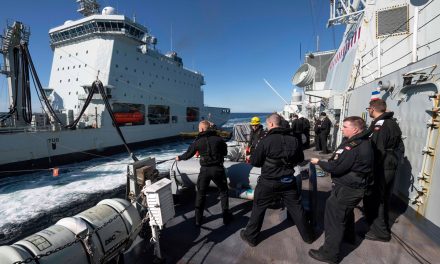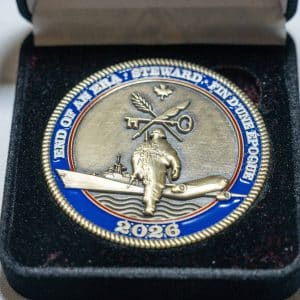
CPO1 Lucie Simpson talks to three women on parade.
Courtesy the Maple Leaf ~
“To see a woman in a senior leadership position is a celebration, a testimony that it is possible.”
These words from Chief Petty Officer First Class (CPO1) Lucie Simpson highlight the changes that have taken place in the Royal Canadian Navy (RCN) over the past few years.
As more women join the navy, those trailblazers currently in senior positions have learned how crucial it is to engage, empower and mentor their younger colleagues.
“Leadership starts by its own actions, so we need to lead and teach women by showing them the best example and impacting them early in their careers,” says CPO1 Simpson, Canadian Forces Health Services Group Chief Warrant Officer. “Being honest right from the beginning – that joining the RCN will be hard work – but just as rewarding. In recent years, breaking the barriers, women have been highly successful in leadership team roles both ashore and on board ships.”
In fact, nine current female CPO1s, the navy’s highest rank of non-commissioned officer, have a total of 263 years of service and 10,050 sea days in the Royal Canadian Navy.
They have served as coxswains aboard maritime coastal defence vessels and Canadian patrol frigates, worked in both the Regular and Reserve Forces in wide-ranging trades, and have held leadership positions in shore-based establishments.
CPO1 Simpson, a communicator research operator, is the first woman in her trade to serve beyond the formation level. She joined the Canadian Armed Forces in 1989. She was posted to Her Majesty’s Canadian Ships Huron and Algonquin as a cryptologic direct support element operator, and deployed in HMCS Ottawa for a six-month deployment to Southwest Asia.
Her current job is her second senior appointment position; she also served as the Canadian Forces Morale and Welfare Chief Warrant Officer.
While serving in Huron in 1996, the number of women on board was so small they lived in a single mess with six to eight bunks.
“At that time, the culture was already changing. Navy leadership was making the decision to bring sailors in, regardless of their gender. That same year we moved over to a mess big enough to host 30 women.”
She is amazed the younger generation of sailors don’t care about women in traditionally male roles.
“Whereas my generation of women judged each other, competed, and tried to mimic what we thought were the expectations for women at that time. Reflecting back, perhaps this was a standard we imposed on ourselves to fit in.”
Her advice to younger women is to find the right mentors, especially other women, who can inspire and bring diversity to their roles in the navy.
“They are very receptive to advice,” she says. “I speak to them regarding work opportunities, deployments, second language training, managing deadlines and expectations, and I also share my own experiences.”
CPO1 Simpson adds she is proud the navy “is an organization where both women and men receive equal salary, are offered the same training and education opportunities, have access to an honours and award system that recognizes members based on their individual accomplishments, and are able to work in an environment that is harassment-free and safe.”
As women continue to join the navy, they can see other women are attaining senior leadership roles, both as officers and non-commissioned members, that they are being listened to, and that they are valued as individuals and as part of the greater navy team.








